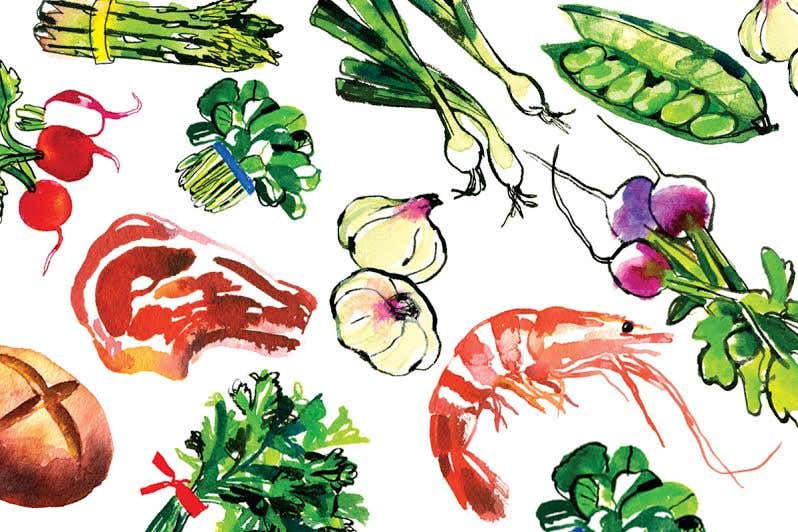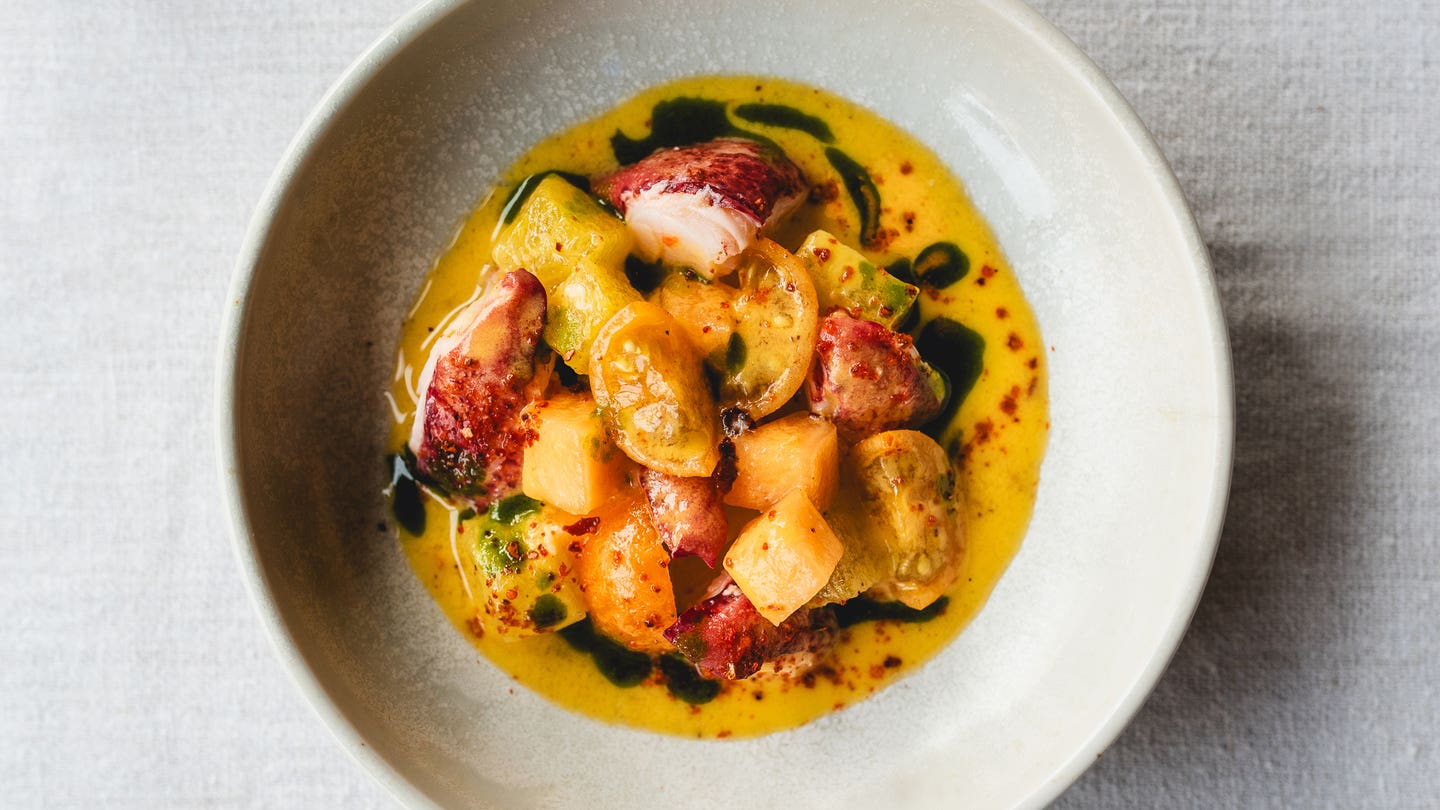
Top Ten Reads
1080 Recipes by Simone and Ines Ortega (Phaidon) This formidable (and straightforwardly named) tome, sometimes referred to as the Iberian Joy of Cooking, has been Spain's best-selling cookbook for more than 30 years. At long last, an English-language edition, updated with recipes that reflect that country's recent avant-garde culinary renaissance, opens this vast repository of Spanish culinary knowledge to American home cooks. —Katherine Cancila
Beyond Nose to Tail: More Omnivorous Recipes for the Adventurous Cook by Fergus Henderson and Justin Piers Gellatly (Bloomsbury USA)_ It's not every cookbook that directs you to "place the [pig's] head in a large pot", but that's exactly what you'd expect (and what you get) in the latest collection from chef Henderson, Britain's most unwavering proponent of offal. Less common fare, such as venison liver, figures prominently among the recipes in this book, but there are also enticing desserts and breads. Henderson's voice is as quirky as ever; in his recipe for pig's head and beans, for example, he advises cooks to allow the ingredients "to bond emotionally but not physically". —Sofia Perez
The Calcutta Kitchen by Simon Parkes and Udit Sarkhel (Interlink)_ Great cookbooks, like all great works of art, have the power to illuminate the unfamiliar. This book, published last year in Britain, achieves just that, taking readers (at least those who haven't been to Calcutta) to places they've never visited, let alone imagined. In a compendium of masterly recipes, essays, and images, coauthors Parkes and Sarkhel and photographer Jason Lowe serve up a vision of India's third-largest city that stays with you long after you've left the kitchen. —James Oseland
Imbibe! by David Wondrich (Perigee)_ In his latest book, the noted cocktail historian Wondrich gives us a tribute to what he calls "the first legitimate American culinary art". Taking his inspiration, and his recipes, from a mostly forgotten 19th-century New Yorker named Jerry Thomas, who wrote his own treatise on mixology that became a barman's bible in its day, Wondrich offers what amounts to a history of industrial-age America writ in booze, covering everything from punches, fizzes, and sours to toddies, slings, and juleps. Drink recipes are accompanied by prose elucidating their provenance and instructions on rendering them in the modern age in your home. —Todd Coleman
The Oxford Companion to Italian Food by Gillian Riley (Oxford Press) Finding authoritative sources on Italian cooking has always been a bit of a wild goose chase; there is no shortage of niche publications, glossaries, scholarly cookbooks, and food-focused travel guides but little in the way of a single, go-to volume. Enter British historian Riley, who has compiled and written an exhaustive, alphabetized encyclopedia on the foods and culinary traditions of Italy, from Abruzzo (the region) to zuppa inglese (the custard). I particularly enjoyed the broad-themed entries like "Arab Influence" (an excellent history lesson in its own right) and "Myths" (which addresses, among other things, dubious accounts of the invention of pasta). —Dana Bowen
Stealing Buddha's Dinner by Bich Minh Nguyen (Viking) In this gracefully written, bittersweet memoir, author Nguyen uses food as a narrative tool to tell a poignant story of cultural assimilation and emotional transformation. Nguyen emigrated with her family from Vietnam in 1975, when she was a small child, and settled in Grand Rapids, Michigan, where she was dazzled by America's colorful ready-to-eat bounty, like Whoppers, Trix, Kool-Aid, and Jolly Ranchers—foods that became seductive totems of the new culture Nguyen longed to embody and, literally, devour. By the end, I too was inspired to consider anew the foods I've loved from childhood until now. —Lily Binns
Revolutionary Chinese Cookbook: Recipes from Hunan Province by Fuchsia Dunlop (W. W. Norton) In her acclaimed first book, Land of Plenty (W. W. Norton, 2003), Dunlop offered an encyclopedic look at Sichuanese cuisine, establishing herself as a meticulous chronicler of regional Chinese cooking. In this book, on the classic dishes of China's Hunan Province, she takes a different tack, presenting personal anecdotes, vividly recounted local legends, and journalistic reportage as preambles to the recipes, which amply describe that province's varied cuisine, from spicy hot pots to subtly flavored stews. To my delight, the best recipes, like the one for the delicious Chairman Mao's Red-Braised Pork, were also the easiest. —Georgia Freedman
Secret Ingredients: The New Yorker Book of Food and Drink edited by David Remnick (Random House) I found nary a bland morsel in this collection of 80 years' worth of food writing taken from the pages of America's foremost magazine of letters. The book is a veritable pantheon of The New Yorker's most venerated contributors, from A. J. Liebling and Joseph Mitchell to M.F.K. Fisher and Woody Allen. It also includes short stories from Don DeLillo, Chang-rae Lee, and other contemporary literary lights. For me the book reaches its apogee with John McPhee's 1968 profile of the legendary wild-foodist Euell Gibbons. To read this sparely elegant, moving portrait is to remember that writing well about food is really no different from writing well about life itself. —David McAninch
The Tenth Muse: My Life in Food by Judith Jones (Knopf) Julia Child may have introduced American home cooks to the pleasures of French cooking, but it was Jones, a young editor at Alfred A. Knopf, who introduced Julia Child to America. And that was only the beginning. Over the past half century, Jones has almost single-handedly scripted the American food revolution, discovering and publishing a roster of culinary luminaries ranging from SAVEUR contributing editor Madhur Jaffrey to Marion Cunningham, author of the updated Fannie Farmer Cookbook (Knopf, 1996). In this memoir, Jones lets us peek into her authors' lives. She kneads mountains of bread in James Beard's Greenwich Village town house, noshes on squirrel and sips bourbon with Edna Lewis, and argues over recipes with Marcella Hazan. While her personal revelations are few, the warm, cosmopolitan world Jones depicts is a joy to inhabit. —Sarah Karnasiewicz
The Texas Cowboy Cookbook: A History in Recipes and Photos by Robb Walsh (Broadway Books)_ A cowboy cookbook? How many variations on beans and coffee could there possibly be? It turns out that cowboy cuisine is a far more complex matter than dime novels would have us believe. In this smart compilation, Walsh, food critic for the Houston Press, deconstructs popular myths about life on the range, pointing out that the campfire fare of the American West drew on Mexican, Cajun, African-American, and Southern-Anglo cooking traditions. Yes, there are recipes for chili and chicken fried steak, but there's also wild duck gumbo and calabacitas con carne (meat-and-squash stew). —Beth Kracklauer
Keep Reading
Continue to Next Story










